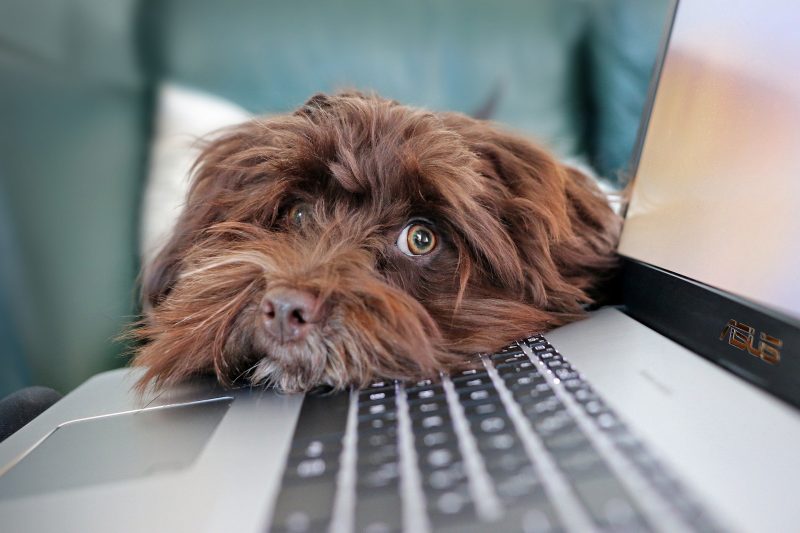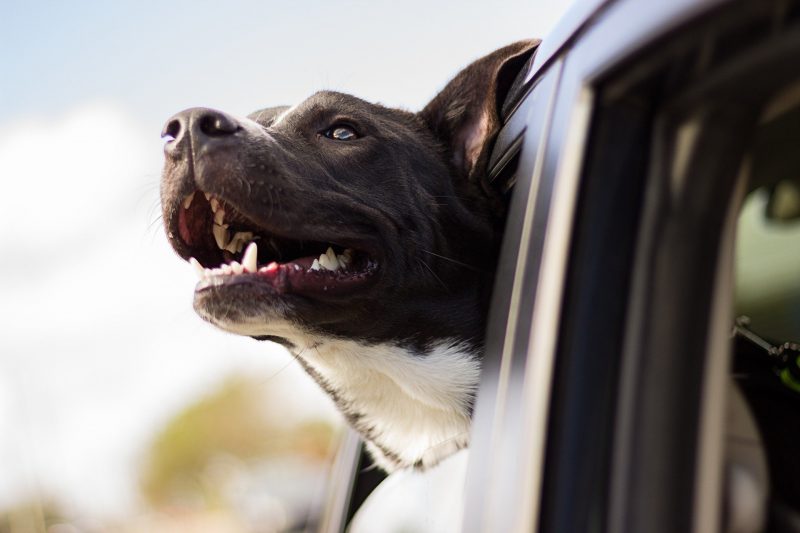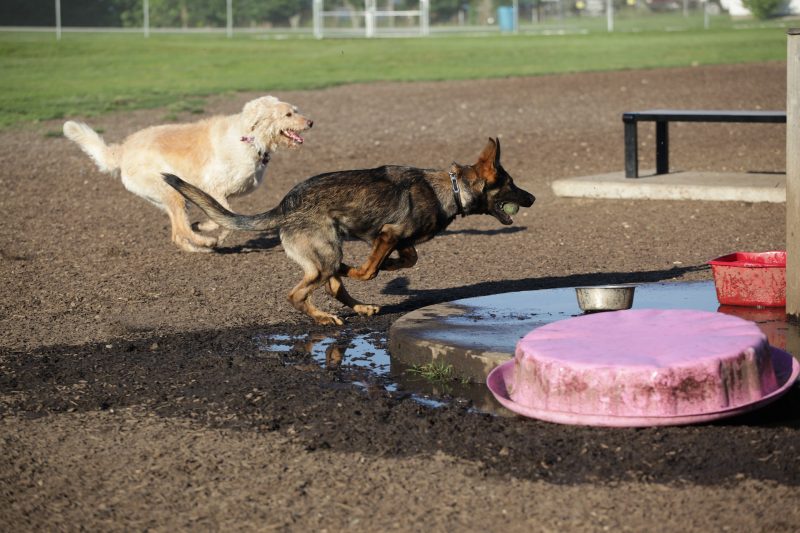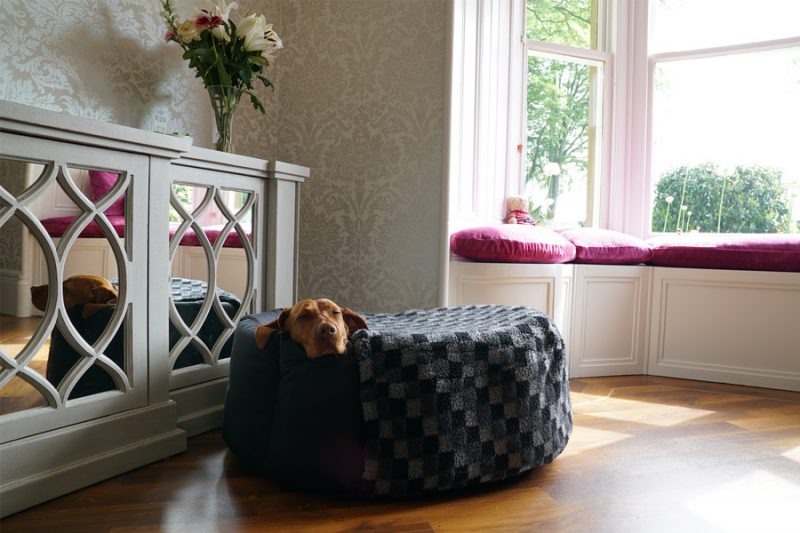Dog Lockdown Tips With a Little Help From Your Nest Dog Bed
Working from home has changed our daily lives in many ways. We have had to learn how to structure our day, get out for some exercise, and use technology to keep in touch with each other. But how did our dogs’ lives change and how can we keep them entertained, exercised, socialised and free from separation anxiety once this is all over? Here are some tips.
Create a Routine
It might be tempting to get your dog’s lunch out of the way early when you have a busy day on Zoom but it can disrupt their rhythm and cause excess energy at the wrong times. If you always feed them in the morning, no problem, but try not to chop and change when they get their food, the last thing you want is your hungry pup bouncing off the walls when you have an important call with the boss! If you do have a meeting that you really need peace and quiet for then try giving your pup a frozen Kong or long lasting chew to keep them occupied; preferably in a crate or waterproof Nest Dog Bed with sides so they keep it off the carpet. Try and keep their walk(s) at a similar time each day too; if they don’t know when it’s coming they’re more likely to get restless and that can result in a number of problems like chewing, barking or raiding the bin! Incorporate regular toileting intervals into your day. If you always leave it until your dog asks to go out they might start asking even when they don’t need to go which can be a difficult habit to break. However you choose to organise your dog’s routine is up to you, the key is that you stick to it.

Dog Waiting Patiently with Head on Laptop Keys
Tire Them Out
Vary the routes that you take your dog on his or her walk. Giving them a different walk will keep them more engaged with new smells and environments and will mentally burn more energy. The more ways you can find to tire them out the better! Another great way is to give them one or two 15 minute training sessions each day; it will help break up their day and provide another form of mental stimulation rather than staring at the walls. Whilst you are less busy at evenings and weekends, this might be the best time to teach your pup those cool tricks you never get around to doing like ‘play dead’ or ‘high five’. If you are new to training you don’t need to buy a book on it, just search YouTube for hundreds of ideas and step by step training guides. You can even work on tricks to make your own life easier. Tuffies founder, Luise, trained her dog, Golum, to find and retrieve her slippers wherever they were in the house – two birds with one stone! You could even set up a treasure hunt where you hide treats in different places and let them use their nose to find them. If you make the hiding spots good this can keep them entertained for a decent length of time, just be sure to hide them in places that you’re happy to have your dog explore – you probably don’t want them digging around in the cables behind the TV!

Happy Dog in the Car
Keep Them Socialised
You are not the only one without a social life just now! It is likely that you took your dog to other’s houses and had more visitors pre-covid so try and find ways of replicating that. If the postman is the only other person your dog sees there’s a chance they’ll lose their friendly, outgoing qualities towards strangers when life returns to normal. You can also use this visit as a training opportunity – reward your dog instantly when they manage to stay calm and quiet around the postman. At the beginning that might only be one or two seconds of quiet for a treat but you’ll be surprised how quickly you can build that up until they start associating full time calmness around visitors with rewards. I even have a friend who’s dog associates the doorbell with lying down in his Nest Dog Bed for a treat. This is particularly useful when you have visitors who have a fear of dogs because it means they get to choose whether/when to interact with puppy instead of being jumped on as they enter. Next, organise your daily outing (only one per day permitted at the time of posting!) with a fellow dog owner and visit parks where your dog can hear those other voices and barks. Obviously we need to be careful to avoid unnecessary physical contact but your dog can meet other dogs and people via their nose, eyes and ears without actually touching.

Dogs Running in the Park
Personal Space
Give your dog a safe space to retreat to. We are all being forced to spend more time than usual at home and that can lead to a noisy house, especially if you have a large family and young kids. Provide your dog with an area in your home to retreat to when they want peace and quiet. If you can’t dedicate a whole room then a crate or Nest Dog Bed with a Sock over the top will be enough to give them some privacy. Make a rule that when the family dog is in there, they are not to be disturbed. It obviously depends on the dog how much they will need their own space but better to give them the option considering they can’t verbally tell you themselves when they’ve had enough of the kids riding them around like a pony!

Dog Resting in Nest Dog Bed – Do Not Disturb!
Beware of Separation Anxiety
Separation anxiety is when your dog can’t stand being by themselves or away from one person in particular. When life returns to normal (if you can remember what that feels like!) and you go back to the office or over to your friend’s house again, there’s a chance that it will come as a shock to your dog. Especially if you got a puppy in the last year because all they have ever known is to be with you and the family and hardly ever left alone. That is likely to lead to howling, barking and general unhappiness with being by themselves. You can start preparing for this now. Start by leaving them in another room by themselves for 30 second and only returning (with a treat) when they are quiet. If it is really bad you might have to start by leaving them in a crate or pen in the same room as you at first. You can then graduate to leaving your home and incrementally building that time up, continuing to reward quietness with returning with a treat. Fixing bad separation anxiety can feel like you’re going backwards some days but persevere with it and remember to stick to your guns and only return when they are quiet – you can make it worse by coming back in with a treat at the height of their howls because they’ll associate crying with your return. After you’ve built this up, try leaving for the whole morning and eventually the whole day. If there aren’t any cafés or part time offices you can work from then do it at the weekend. When you go back to full time you might not have the option of slowly building up to longer intervals and this is a crucial part of fixing separation anxiety.
Good luck and all the best from Tuffies! We have reached the final stretch – not long until you and your dog can get back to normality!

-
17/11/2020 11:41
The Life of a Guide Dog
Audrey from Guide Dogs for the Blind Association details the ins and outs of training, matching dogs to the right owners and the importance of volunteers. <strong><span style="text-decoration: underline;">Training </.. -
22/01/2021 13:06
Dexter the Labrador, the Paint Shop, and Puppy Tuffie Training
Scott Annison, the owner of the painting and decorating supplies shop 'Trade Secrets' takes his 6-month-old Labrador, Dexter, into work with him. He talked to me about the decision to get a dog over lockdown and the pros..



